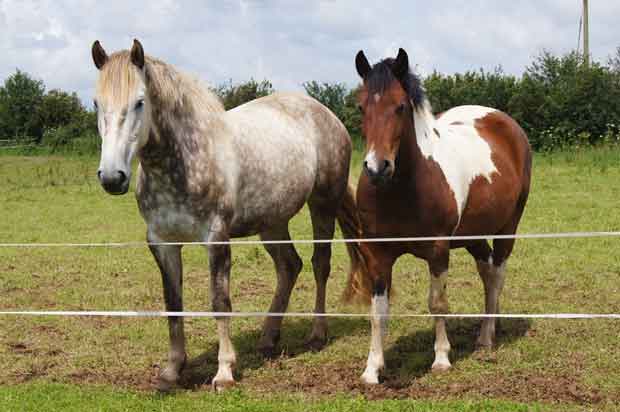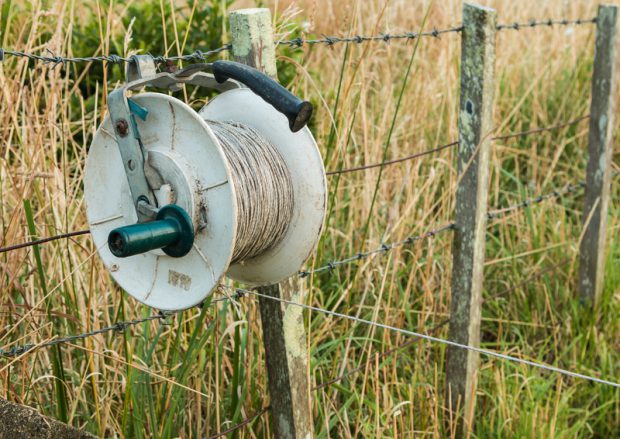Three winter grazing secrets

Photo: Dreamstime
Grazing stock on a small farm, especially through winter, can be a challenge and it’s learning good pasture management that can help get you through.
Words: Nadene Hall
Many farmers overgraze paddocks, eventually creating a plant community of less-desirable species. Stock will always eat the most palatable plants first and repeated grazing eventually kills it because it never gets a chance to recover fully before being grazed again. Weeds then go to seed, filling the space left by the dead grass. Over time, quality forage becomes zero.
In winter pasture goes under even more strain but changing the way you manage your stock can have a positive effect on the health of your grass and your stock. Intensively managed grazing or controlled grazing could be the answer; the intensive part relates to the management side of the equation rather, than the intensity of grazing. This type of farming involves grazing paddocks in sequence so pasture gets time to recover. It also means grass doesn’t tend to get grazed off to ground-level and suffer root damage. Instead a good covering of grass is allowed to remain, protecting the plant’s growing base. The theory behind this type of grazing style is paddocks stay healthier and stock keep good weight and health through a hard time of year.
1. SUBDIVIDE
Try subdividing existing paddocks into smaller paddocks. You will need good electric fences to do this and a way to move troughs around so stock always have access to fresh water. You will need to become a keen observer of your pasture so you can make a good assessment of it.

Photos: Dreamstime
2. MOVE OFTEN
You want to move stock onto a paddock when grass is in its peak growth cycle and at its highest quality. Ryegrass grows in a 60 day cycle and each plant grows three leaves – one leaf matures approximately every 30 days and the most nutritious phase is when the second leaf has reached maturity and a third leaf is about to grow. To stop grass being cut down to this first stage all the time, you may find you need to move your stock every 1-3 days, depending on grass growth rate, the weather and the number of stock you have. A good way to judge is grass in a paddock should be down to about half its original height before the animals are moved into the next paddock.
3. BE FLEXIBLE
Sometimes pasture will need longer to recover in some paddocks, while in other paddocks only recently grazed it will be bounding away – in this case, you should graze the paddock with the longer forage. By keeping a close eye on pasture you will also find stock will eat many species of weed when in their young stages. Dandelion and plantain, when young and tender, are very nutritious for stock – it is only when much older and denser that stock won’t touch them.
You will find over time that intensive grazing helps your stock grow well and is good for your pasture, but it has other benefits too:
– stock will come to see you as a source of fresh pasture and will more used to people, making them easier to work with;
– because you see your stock more often, you are more likely to pick up on health problems early;
– by keeping grass healthy you will be less likely to have large areas of weeds to spray out.
Knowing your pasture well also means you take best advantage of it. When grass is growing quickly, stock should be moved through paddocks quickly. When it is growing slowly, the rotation is slowed to give each paddock a longer time period to recover. If you have a paddock that needs resowing anyway, this may be the paddock you use the most.
This style of farming takes up more of your time and requires you to use your powers of observation. It will take time, maybe 2-3 years, to recognise the different growing patterns for your pasture. You will also need to be more diligent in checking soil quality and making sure grasses are healthy. But by doing this properly you should end up with a more valuable farming operation all round.
Don’t panic if stock stay longer in one particular paddock than you would like. Grass that is over-grazed will recover with care and attention, it will just take longer to do so. Stock can be put in a sacrifice paddock and fed hay, silage and other supplements while waiting for forage in other paddocks to recover. The sacrifice paddock can then be resown in spring. Pick a paddock that needs resowing as your sacrifice paddock, so you aren’t ruining more good pasture.
ARE YOU OVERSTOCKED?
One of the big questions you need to ask before you run out of feed is do you have the right stocking levels to go through winter. Ideally you should be under-stocked so there is some leeway built into your feeding regime if animals end up requiring more food than you anticipated. One acre will generally support:
– 1-2 horses for one year (hard feed over winter will be needed)
– 6 sheep or goats raising lambs or kids until 3 months of age
– 1 cow for one year raising a calf until 3 months of age
– 350 chickens (with shelter, 10 birds per square metre)
– 5-6 alpaca
For those who use well managed farm management systems an acre could support six cows (or 24 sheep) as part of a controlled grazing regime. In other very scrubby, sparse grazing areas one cow would have trouble supporting itself on two or more acres.
You may hear of farmers referring to stock units or LSU (live stock unit) – years ago a stock unit was the equivalent of one standard ewe. A cow was the equivalent of 4-6 stock units (ie it would use the same pasture as 4-6 sheep). While this unit can be used for large amounts of animals it becomes a very complicated equation and these days other factors are taken into account and the term isn’t as important as it once was.
Love this story? Subscribe now!
 This article first appeared in NZ Lifestyle Block Magazine.
This article first appeared in NZ Lifestyle Block Magazine.
